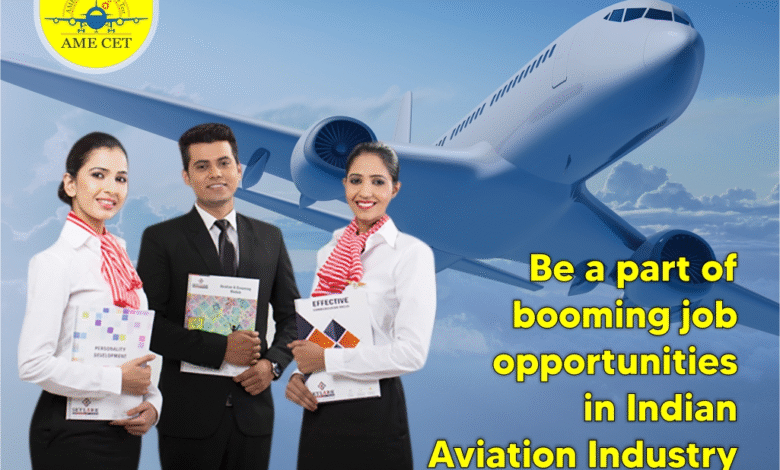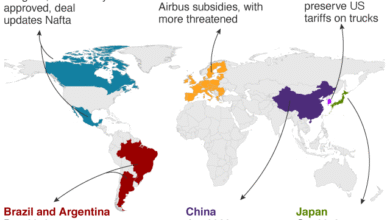Aviation Jobs: Bridging the Gap for Skilled Workers

Aviation jobs are at the forefront of a critical workforce evolution as the U.S. aviation industry faces a growing aircraft technician shortage. With a significant number of skilled aviation workers nearing retirement, companies are scrambling to fill the gap left behind, creating ample opportunities for aspiring professionals. This shift in the aviation workforce is reflected in airline hiring trends, which aim to attract younger individuals to combat the impending skill deficit. Reports highlight that with over 40% of current aircraft mechanics being over 60 years old, addressing this shortage has become a pressing concern for manufacturers of aircraft and their components. By positioning aviation jobs as viable career paths, companies are fostering a new generation of talent essential for the industry’s growth and sustainability.
Within the aerospace sector, careers related to flight operations and aircraft maintenance are increasingly vital as the demand for qualified personnel rises. The manufacturing landscape is shifting, and aviation-related occupations offer promising prospects for those willing to engage in technical training and skill development. As experienced technicians retire, the need for fresh talent becomes more crucial, leading to heightened recruitment efforts from airlines and aircraft manufacturers alike. Alternative pathways for entering this field—such as high school programs that allow students to earn certifications—are being recognized as key trends in shaping the future workforce. As industries seek to cultivate a skilled aviation labor pool, addressing the challenges of staffing will play a significant role in maintaining safety and efficiency in air travel.
The Growing Need for Skilled Aviation Workers
The aviation industry is experiencing a critical shortage of skilled aviation workers, particularly aircraft technicians. This shortage has been exacerbated by a wave of retirements as older technicians step down, resulting in an increasing gap between the demand and supply of qualified professionals. With an average age of 54 among certified mechanics and a significant percentage nearing retirement, the urgency for a younger workforce has never been more apparent. The forecast is bleak, as experts predict a shortfall of 25,000 aircraft technicians by 2028, a statistic that highlights the need for the industry to attract new talent into the fold.
To combat this shortfall, airlines and aerospace manufacturers are ramping up recruitment efforts, targeting younger individuals who are eager to enter the field. Companies recognize that revamping their hiring strategies and enhancing the appeal of aviation jobs is essential to securing the future workforce. Initiatives such as partnerships with high schools to provide hands-on training are becoming more common, allowing students to explore aviation careers early on and obtain essential FAA certifications. By fostering interest among youth as early as high school, the industry hopes to cultivate a new generation of skilled aviation workers.
Aviation Jobs and Airline Hiring Trends
Aviation jobs have become a cornerstone of the American economy, yet the current hiring trends reveal a need for significant change. As the industry grapples with the challenge of filling roles traditionally held by experienced technicians and artisans, companies are beginning to understand the importance of adapting their hiring practices. In order to attract younger candidates, many airlines are increasing salaries and offering better benefits, appealing to the next generation while also addressing the immediate workforce shortage. This shift not only reflects the current labor market realities but also aligns with the long-term strategic goals of the aviation sector.
Moreover, hiring trends within the aviation industry are showing a distinctive pivot towards a skills-based recruitment approach. Companies are increasingly valuing practical experience and technical expertise over traditional educational qualifications, resonating with a younger demographic that seeks employment opportunities that offer hands-on experience and immediate engagement. With the median pay for aircraft technicians significantly higher than the national average, this trend promises to draw more individuals into the workforce, bridging the gap that is crucial for the industry’s growth and sustainability.
Responding to the Aircraft Technician Shortage
As the aviation industry faces an impending aircraft technician shortage, responses from leading companies and educational institutions provide a glimpse of hope. Major players like American Airlines are actively partnering with schools to create programs designed to spark interest in aviation careers, providing students with direct access to training and resources. These collaborations aim to enhance the visibility of aviation jobs while simultaneously equipping students with the necessary skills to thrive in the industry. The proactive efforts to engage younger individuals in aviation can potentially stave off the predicted technician shortage.
In addition to academic partnerships, businesses are also advocating for higher wages and better working conditions to attract skilled talent. With reports indicating that aviation jobs provide lucrative median salaries, there is a growing recognition of the need for competitive compensation to draw in both experienced workers and new recruits. By adopting a multifaceted approach that combines educational outreach and improved employment conditions, the aviation industry hopes to mitigate the skilled labor shortages that threaten its future stability.
Challenges in Attracting Young Talent to Aviation Careers
Despite the opportunities available in the aviation field, attracting young talent remains a significant challenge. Many recent high school graduates are still opting for traditional college degrees, often overlooking valuable aviation careers that offer both financial stability and personal fulfillment. This trend underscores the necessity for industry leaders to highlight the diverse pathways available in aviation, including hands-on roles that resonate with those seeking practical, dynamic work experiences. By showcasing the benefits and career advancements within this sector, the aviation industry can entice more youth to consider aviation jobs as a viable career choice.
Furthermore, the misconception of aviation roles as solely requiring advanced degrees can deter potential candidates from exploring these options. Promoting successful stories of individuals who have thrived in aviation without a traditional college background can help change perceptions and encourage enrollment in aviation programs. Encouraging youth to appreciate the transformative nature of aircraft maintenance and manufacturing roles can pave the way for more skilled aviation workers entering the field, ultimately enriching the workforce and securing the industry’s future.
Future Opportunities in Aviation Manufacturing Jobs
Aviation manufacturing jobs represent a crucial segment within the broader aviation industry, contributing to its growth and stability. With increasing demand for new aircraft and advanced components, the sector is ripe with opportunities for both entry-level positions and seasoned professionals looking to advance their skills. Companies like GE Aerospace are not only providing attractive compensation packages but are also focusing on developing their existing workforce through training and educational programs. This approach aims to create a robust pipeline of skilled workers ready to meet the demands of evolving technologies in aircraft manufacturing.
Additionally, the shift towards high-tech manufacturing jobs emphasizes the need for updated skills that align with modern aviation technologies. As advancements continue to unfold across the aerospace sector, professionals who are well-versed in the latest manufacturing practices will be in high demand. The commitment to investing in training and education not only addresses immediate labor shortages but also prepares the aviation workforce for future industry shifts. By focusing on future opportunities in aviation manufacturing, both companies and job seekers can navigate a promising landscape filled with potential.
Maximizing Engagement to Boost Aviation Workforce
Maximizing engagement is essential for boosting the aviation workforce, particularly as the sector contends with an aging demographic of skilled workers. Engaging young talent requires a multifaceted approach that combines marketing, outreach, and tailored recruitment strategies. Companies must actively communicate the advantages of pursuing aviation careers, targeting youth through social media campaigns and interactive events that showcase the exciting possibilities within the industry. By enhancing engagement efforts, the aviation industry can successfully attract fresh talent eager to embrace new technologies and innovative practices.
In addition to marketing efforts, fostering a positive workplace culture that values employee contributions, offers flexibility, and promotes career advancement is critical for retention. As companies work to rebuild their ranks following the impact of the Covid pandemic, understanding how to create environments that cultivate satisfaction and growth will provide sustainment for the aviation workforce. The focus on maximizing engagement today can lay the groundwork for a thriving future in aviation, as companies harness the enthusiasm and innovation of a new generation of skilled aviation workers.
The Importance of FAA Licenses in Aviation Careers
Obtaining FAA licenses is of utmost importance for aspiring professionals in the aviation sector. These licenses not only validate the skills and qualifications of technicians and mechanics but also enhance employability in a competitive job market. As airlines and aerospace companies seek certified professionals to ensure the safety and reliability of aircraft, having an FAA license becomes a critical factor in securing aviation jobs. Programs that facilitate the attainment of these licenses in high school are gaining traction, providing students with a head start in their aviation careers.
Moreover, the presence of educational programs that allow students to earn FAA licenses emphasizes the industry’s commitment to developing a skilled pipeline of workers. Institutions like Aviation High School in Queens offer hands-on training, empowering students to acquire practical expertise alongside their certifications. This approach prepares them for real-world challenges in the aviation field, increasing their chances of successful employment. With the demand for licensed technicians on the rise, the importance of FAA licenses cannot be overstated, as they mark a significant milestone in a young professional’s journey within the aviation workforce.
Confronting the Aging Workforce in Aviation
Confronting the aging workforce in aviation is a pressing concern for industry stakeholders, as the current demographic landscape signals a large-scale retirement wave. With a significant portion of aircraft technicians nearing retirement age, the sustainability of the workforce hangs in the balance. Innovative recruitment strategies aimed at younger generations are crucial, promoting not only the practicality of joining the aviation field but also its potential for career longevity and financial success. As companies prepare for looming retirements, addressing these workforce challenges must take priority.
Furthermore, confronting the aging workforce also entails investing in training and continuing education for current workers. Upskilling opportunities that allow older technicians to transition into mentorship roles can be invaluable for passing down expertise to younger hires. By fostering an environment that encourages collaboration between generations, the aviation industry can leverage the experience of seasoned professionals while welcoming fresh perspectives. This dual approach promises to build a balanced workforce capable of addressing both existing skill gaps and future demands.
Building a Foundation for Future Aviation Careers
Building a foundation for future aviation careers involves comprehensive strategies designed to attract and retain talent within the industry. Such initiatives can include enhanced recruitment programs that actively target schools, workshops that provide training in aviation skills, and partnerships with local businesses that help facilitate job placements. By investing in the development of pathways for young individuals to enter aviation, the entire industry stands to benefit from a revitalized workforce poised to meet emerging challenges.
Education plays a vital role in this foundation, especially as many students are reconsidering the necessity of traditional college routes. With programs that emphasize practical training, companies can align their needs with the aspirations of aspiring aviation professionals. By fostering a culture of career exploration and technical training, the aviation sector can ensure a steady influx of qualified workers who are ready to drive innovation and growth within the industry. Ultimately, this foundation will serve as a springboard for the future of aviation jobs, unlocking new possibilities for economic development and job creation.
Frequently Asked Questions
What is the current aircraft technician shortage in the U.S. aviation industry?
The U.S. aviation industry is experiencing a significant aircraft technician shortage, with predictions indicating a shortfall of 25,000 aircraft technicians by 2028. This shortage is largely attributed to retirements, as many skilled aviation workers are nearing retirement age, with about 40% of certified mechanics over 60 years old.
How do airline hiring trends impact the aviation workforce?
Airline hiring trends are heavily influenced by the increasing demand for skilled aviation workers due to a looming technician shortage. Airlines and manufacturers are actively recruiting younger individuals to address this gap, recognizing the need for a robust aviation workforce to support growth and maintain safety.
What steps are being taken to attract young skilled aviation workers?
To attract young skilled aviation workers, companies are partnering with high schools and vocational programs to promote aviation careers. Initiatives include offering hands-on training and opportunities to earn FAA licenses, which help engage students and encourage them to pursue aviation jobs directly after high school.
What are the manufacturing job opportunities in aviation?
Manufacturing jobs in aviation are abundant, especially as companies ramp up efforts to recruit new talent. Positions range from aircraft assembly to component manufacturing, with competitive salaries reported; for instance, GE Aerospace offers base pay between $80,000 to $90,000 per year.
What is the expected job outlook for aircraft technicians in the coming years?
The job outlook for aircraft technicians is promising, with an expectation of 13,400 job openings annually over the next decade. This demand is driven by industry growth and the need to replace retiring skilled workers, making it an attractive field for job seekers.
How does the average pay for aviation jobs compare to other industries?
The median pay for aircraft technicians in the U.S. was reported at $79,140 annually in 2024, significantly higher than the national median income of $49,500. This competitive salary reflects the specialized skills required in the aviation industry.
What challenges are faced by companies trying to hire in the aviation workforce?
Companies face various challenges in hiring skilled aviation workers, including perceptions of the industry, wage competitiveness, and the immediate need to fill positions left by retiring personnel. These factors make it crucial for employers to enhance their recruitment strategies and offer appealing compensation.
What role do educational institutions play in the future of aviation jobs?
Educational institutions are playing a vital role in the future of aviation jobs by providing technical training and industry certifications tailored for aviation careers. Programs in high schools and vocational training centers help bridge the gap between education and the aviation workforce, ensuring a steady influx of skilled workers.
Why are young people increasingly considering aviation jobs without a traditional college degree?
Many young people are considering aviation jobs without a traditional college degree due to the appealing pay, hands-on nature of the work, and the growing availability of vocational programs that lead directly to FAA certifications. These factors make aviation a viable and attractive career path.
What can be done to improve the image of aviation jobs to attract new talent?
To improve the image of aviation jobs and attract new talent, the industry can focus on highlighting the benefits of skilled positions, including competitive salaries, job stability, and opportunities for advancement. Creating outreach programs and partnerships with schools can also help shift perceptions and engage the younger generation.
| Key Point | Details |
|---|---|
| Retirement Wave | Many aircraft technicians are nearing retirement; average age is 54 with 40% over 60. |
| Projected Shortage | Estimated shortage of 25,000 aircraft technicians by 2028. |
| High Demand and Pay | Median pay for technicians is $79,140; airlines expect 13,400 job openings annually. |
| Attracting Youth | Airlines are engaging younger people through partnerships with schools and on-the-job training. |
| Challenges and Opportunities | Industries face hiring challenges while adapting to changing workforce dynamics and seeking skilled workers. |
Summary
Aviation jobs are becoming increasingly crucial as the industry faces significant challenges due to an aging workforce. With a predicted shortage of skilled technicians by 2028, companies are focusing on attracting younger individuals to fill these roles. The industry offers competitive salaries and numerous opportunities, making it an appealing field for those looking to enter a stable and rewarding career. Initiatives like partnerships with educational institutions aim to inspire the next generation, ensuring that the demand for skilled aviation jobs can be met as we look to the future.




